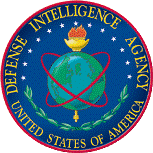United States Department of Defense

United States Department of Defense Military Intelligence
Date of this Version
8-1953
Document Type
Article
Citation
The minimum unambiguous citation for this pamphlet is:
DA Pam 30-26, 1953.
Abstract
This is a detailed, well-illustrated guide showing the range of weapons and equipment army technical intelligence was interested in, including:
- Armored vehicles
- Artillery
- Infantry small arms
- Mortars, antitank weapons, and grenades
- Mines, booby traps, and demolitions
- Ammunition
- Artillery rockets and rocket launchers
- Radio and radar antennas
- Radio transmitters and receivers
- Bridge and stream-crossing equipment
- Construction equipment
- Engineer equipment used in Arctic warfare
- Ordnance equipment used in Arctic warfare
- Quartermaster equipment used in Arctic warfare
Because the descriptions are so detailed and well-illustrated, the pamphlet is a good guide to army technical terms.
When this pamphlet was published the technical intelligence in the US Army was about 10 years old, and technical intelligence requirements had matured. At that time, technical intelligence was divided among a number of organizations in the Headquarters, Department of the Army. The Office of the Assistant Chief of Staff for Intelligence (OACSI) was the General Staff agency in charge of all national-level intelligence related to ground forces. A staff section in the OACSI coordinated the technical intelligence efforts of the army.
The production of technical intelligence was carried out by the army technical services. The technical services were bureaus which supplied weapons, equipment, and services to the Army, managed the careers of officers in the various branches, trained specialists, and organized and trained special purpose military units. There were a number of technical services including the Chemical Corps, the Corps of Engineers, the Army Medical Service, the Ordnance Corps, the Quartermaster Corps, etc. The Quartermaster Corps, for example, developed, procured, and issued clothing and equipment and supplies for the Army; operated the Army burial services; managed the careers of officers commissioned in the Quartermaster Corps; organized and trained specialized quartermaster units for the army; and ran Quartermaster schools. [Note that the list of areas of interest above does not mention clothing, equipment, tentage, etc. Similarly, it does not mention medical supplies or equipment.]
The headquarters of each technical service was the office of the chief of the service in Washington. For example, the Quartermaster General was the chief of the Quartermaster Corps. The Office of the Quartermaster General was his headquarters and a part of the Headquarters, Department of the Army.
Most technical intelligence was produced by staff sections within the offices of the chiefs of the services. However, the US Army Signal Corps Intelligence Agency had been set up as a free-standing, special purpose technical intelligence agency reporting to the Chief Signal Officer.
More than 10 years after the start of World War II, the army publication system had become a well-oiled machine. I imagine that the technical intelligence section in the OACSI managed the production of this pamphlet – instructing the technical services to provide chapters, editing the final publication, and shepherding it through the publication process.
Included in
Defense and Security Studies Commons, Military and Veterans Studies Commons, Other Engineering Commons, Peace and Conflict Studies Commons, Soviet and Post-Soviet Studies Commons


Comments
(1) This is a digital copy of a copy of a document loaned to Robert Bolin by the Pentagon Library.
(2) It superseded DA Booklet, A Guide to the Collection of Technical Intelligence (Part I), July 1950
(3) Because the army reused document numbers and titles, the date must be included to cite any given document unambiguously.
(4) Pages 82 & 83 are missing.